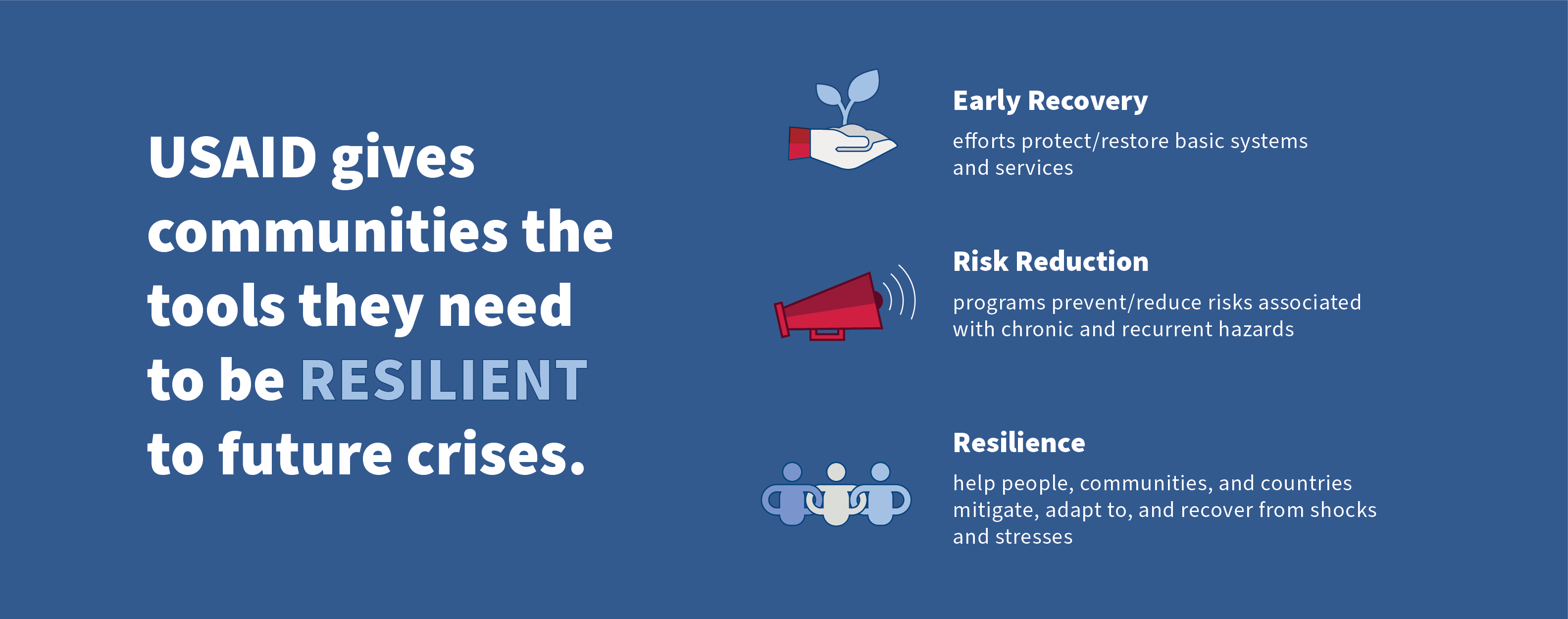
Over the past decade, humanitarian crises have grown more protracted and complex, moving beyond responding to sudden-onset disasters to addressing chronic vulnerabilities and reducing the overall impact of recurrent shocks and stresses. In addition to leading the U.S. government's response to international disasters, USAID's Bureau for Humanitarian Assistance provides the foundations for transformative change and self-reliance through our support of early recovery, risk reduction, and resilience (ER4) programs. Our goal is to improve the lives of those vulnerable to or affected by crisis, unconditionally and impartially, so that all whom we serve are treated with dignity and respect. Our Strategic Framework for Early Recovery, Risk Reduction, and Resilience lays out our approach to these critical activities.
FY 2023 Early Recovery, Risk Reduction, and Resilience Programs Fact Sheets
- Central Africa ER4 Fact Sheet and map
- East Africa and Sudans ER4 Fact Sheet and map
- East Asia and the Pacific ER4 Fact Sheet and map
- Middle East, North Africa, and Europe ER4 Fact Sheet and map
- South and Central Asia ER4 Fact Sheet and map
- West Africa ER4 Fact Sheet and map
FY 2022 Early Recovery, Risk Reduction, and Resilience Programs Fact Sheets
- Central Africa ER4 Fact Sheet and map
- East Africa ER4 Fact Sheet and map
- East Asia and the Pacific ER4 Fact Sheet and map
- Latin America and the Caribbean ER4 Fact Sheet and map
- Middle East, North Africa, and Europe ER4 Fact Sheet and map
- South and Central Asia ER4 Fact Sheet and map
- Southern Africa ER4 Fact Sheet and map
- West Africa ER4 Fact Sheet and map
FY 2021 Early Recovery, Risk Reduction, and Resilience Programs Fact Sheets
- Central Africa ER4 Fact Sheet and map
- East Africa ER4 Fact Sheet and map
- East Asia and the Pacific ER4 Fact Sheet and map
- Latin America and the Caribbean ER4 Fact Sheet and map
- Middle East, North Africa, and Europe ER4 Fact Sheet and map
- South and Central Asia ER4 Fact Sheet and map
- Southern Africa ER4 Fact Sheet and map
- West Africa ER4 Fact Sheet and map
FY 2020 Development and Disaster Risk Reduction Fact Sheets
- East Africa Development and DRR Fact Sheet and map
- Central Africa Development and DRR Fact Sheet and map
- East Asia and the Pacific Development & DRR Fact Sheet and map
- Latin America and the Caribbean Development & DRR Fact Sheet and map
- Middle East, North Africa, and Europe Development & DRR Fact Sheet and map
- South and Central Asia Development & DRR Fact Sheet and map
- Southern Africa Development and DRR Fact Sheet and map.
- West Africa Development and DRR Fact Sheet and map.
